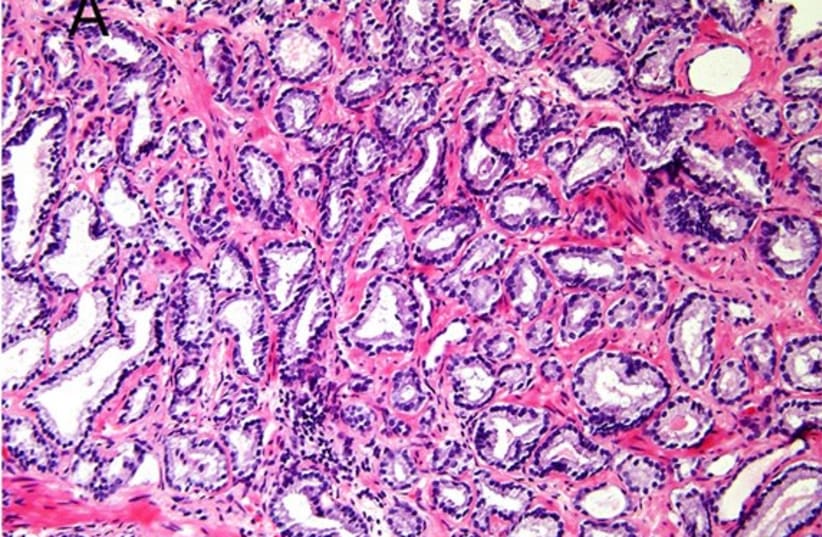November, designated as prostate cancer awareness month, is an ideal time for men and their families to learn about the benefits of early detection and explore various treatment options.
In this article, I will explain the disease, share global and local data, and highlight how life can continue fully even after diagnosis.
What is prostate cancer?
Prostate cancer is a malignant tumor that develops in the prostate gland, a part of the male reproductive system. Located below the bladder, the prostate produces the fluid component of semen. While this cancer often progresses slowly and may not require immediate treatment, it can be aggressive and spread to other parts of the body if not detected in time.
Global and local data
Globally, prostate cancer is the second most common cancer among men, following lung cancer. Over 1.4 million new cases are diagnosed annually worldwide, with approximately 375,000 deaths each year.
In Israel, prostate cancer is the most common cancer among men. Annually, about 2,700 new cases are diagnosed locally. Thanks to growing awareness and advanced medical technologies, the mortality rate is steadily declining.

Early detection – the key to successful treatment
When it comes to prostate cancer, early detection is critical – and, in most cases, leads to a complete cure.
In the early stages, prostate cancer typically has no noticeable symptoms. Therefore, men over the age of 55 are encouraged to undergo annual screening tests, particularly those at higher risk, such as those with a family history of the disease.
The primary test for early detection is the PSA – prostate-specific antigen – blood test, which measures the levels of this antigen in the blood. Elevated PSA levels may indicate the presence of cancerous cells in the prostate. Additional diagnostic tools, such as MRI imaging, digital rectal exams (DRE), and other assessments, can provide further clarification.
Digital monitoring via AN app
The Living with Prostate Cancer organization offers men aged 50 to 69 the opportunity to monitor their PSA levels via a digital application. The app allows users to report their PSA test results, receive reminders for annual tests, and obtain guidance on consulting a physician when necessary. In some cases, users can schedule expedited appointments with a specialist at Beilinson Hospital. Access the app through the website: www.prostate-il.org. Monitoring is anonymous and requires only your age and email address.
Advanced treatment options
Fortunately, we live in an era with diverse and advanced treatment options for prostate cancer. The choice of treatment depends on several factors, including the patient’s age, overall health, and the stage of the disease. Available options include:
- Active Surveillance: For slow-growing, non-aggressive tumors, regular monitoring without immediate treatment is often sufficient.
- Prostatectomy: Surgical removal of the prostate gland is suitable for cases where the cancer is localized to the prostate.
- Radiation Therapy: High dose radiation is also used for a cureity treatment in localized prostate cancer.
- Hormonal Therapy: Medications that lower hormone levels, which can stimulate tumor growth, are typically used for metastatic cancer. In some localized cases, hormonal therapy is combined with radiation for enhanced effectiveness.
- Chemotherapy: Utilized in certain cases where the cancer has spread beyond the prostate.
Modern medicine focuses on personalized treatment tailored to the nature of the disease and the individual patient’s needs.
Living with prostate cancer
One of the key messages I share with my patients is that prostate cancer, while challenging, does not have to disrupt long-term quality of life. Many patients manage to maintain fulfilling lives, continue working, and stay socially and physically active even after diagnosis and treatment.
Maintaining a healthy diet, regular physical activity, and strong social connections can significantly aid in coping with the physical and emotional challenges of the disease. It is also crucial to seek support systems, including family, friends, or professional psychological and social support groups.
Summary
Men aged 55 to 69, especially those at high risk, should request annual PSA tests from their primary care physician. Men with a family history of prostate or breast cancer, or who are known carriers of BRCA1 or BRCA2 genetic mutations, should begin monitoring at a younger age.
Advancements in medicine allow for more effective treatments with fewer side effects, enabling individuals to lead good, fulfilling lives even when facing the disease. November is the perfect time to pause, think about our health, and take the first step toward protecting ourselves.
The writer is head of the Urological Oncology Unit at the Davidoff Center in Beilinson Hospital.
